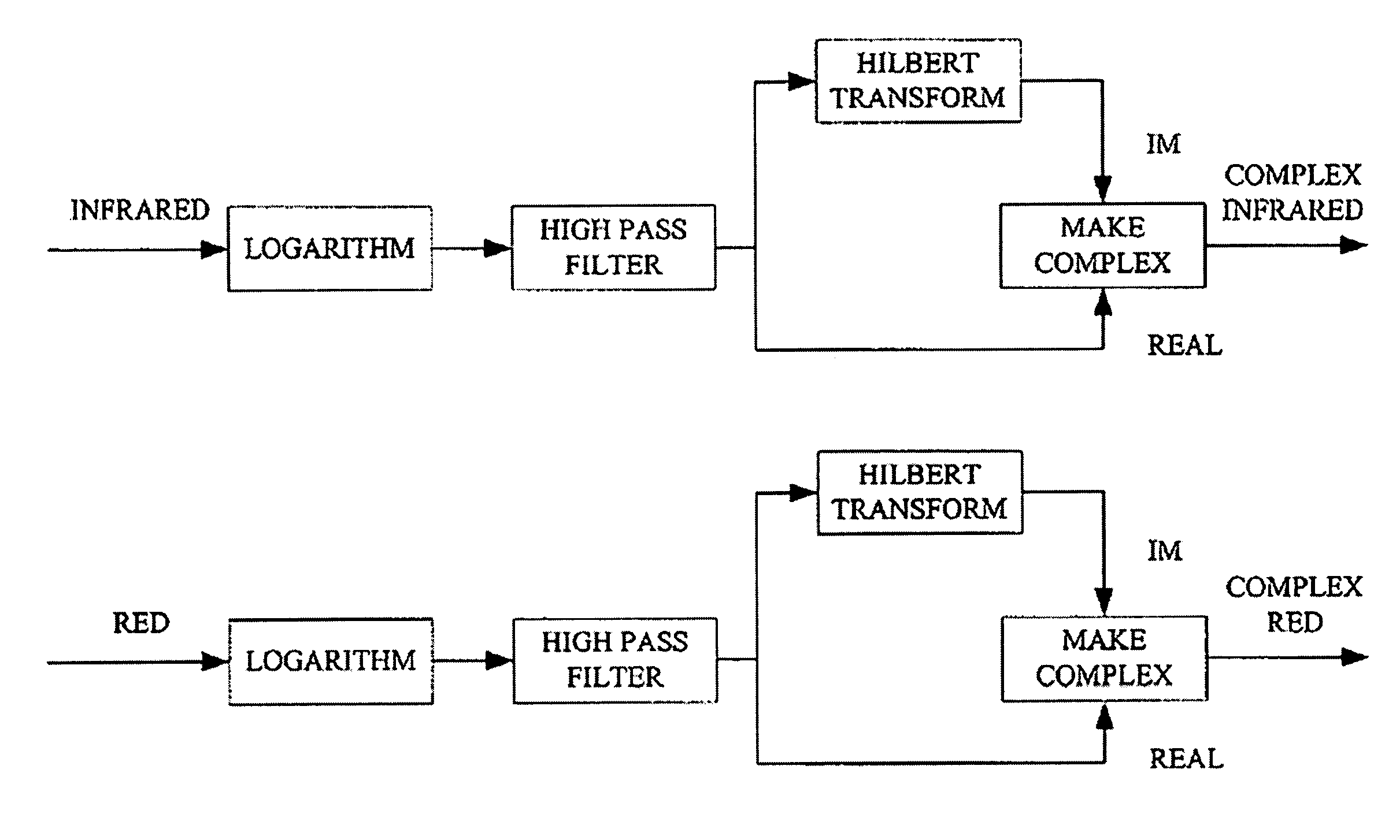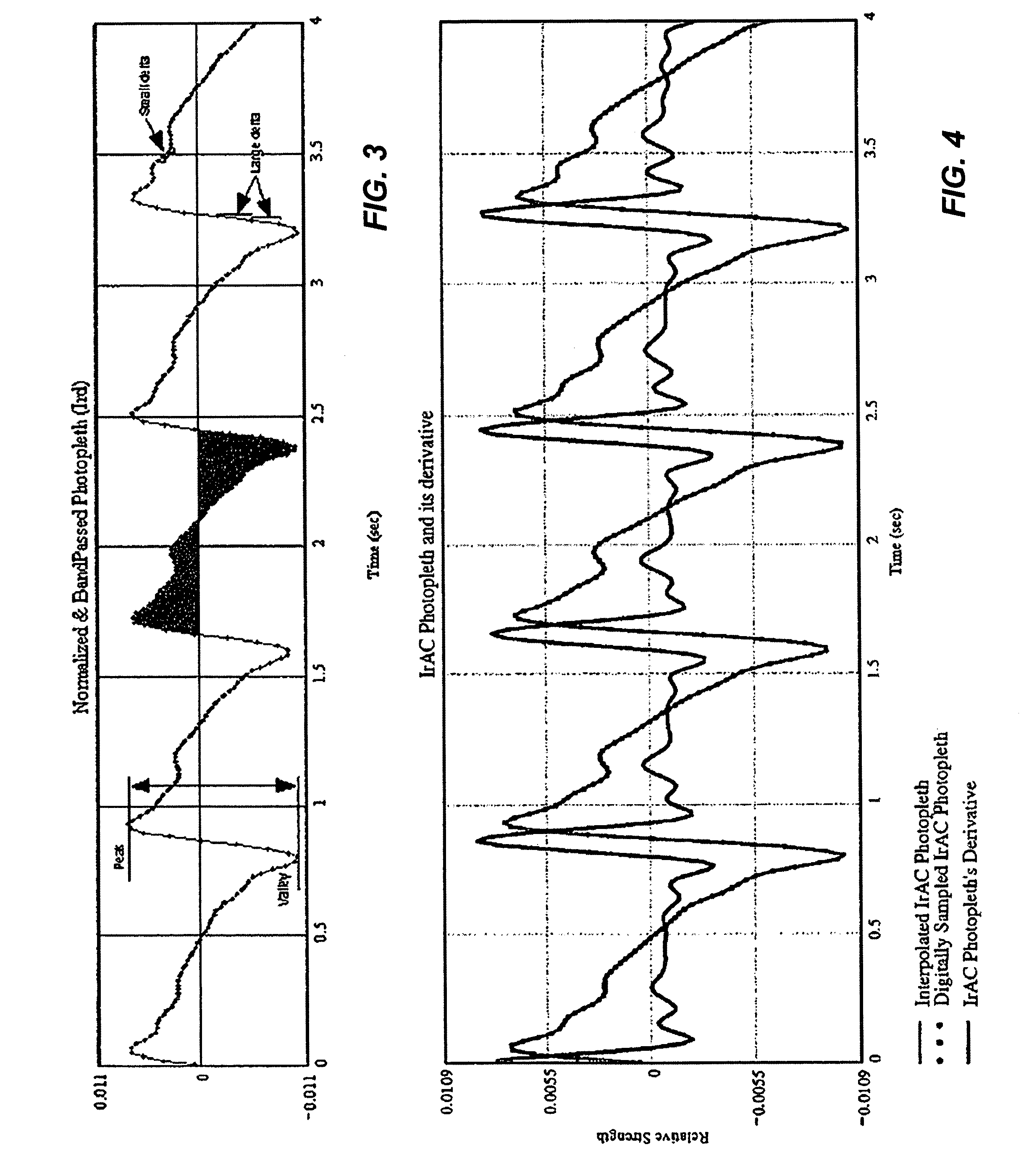Systems and methods for determining blood oxygen saturation values using complex number encoding
a technology of complex number encoding and blood oxygen saturation, applied in the field of pulse photometery, can solve the problem of previous failures to determine a stream of point-by-point saturation values, and achieve the effect of reducing the diagnostic valu
- Summary
- Abstract
- Description
- Claims
- Application Information
AI Technical Summary
Benefits of technology
Problems solved by technology
Method used
Image
Examples
Embodiment Construction
[0047]Complex numbers were generally invented / discovered in the 1500's by Galiermo Cardano in Italy as he was struggling to solve a general third order polynomial equation. Later, Argand suggested that each complex number may be represented as a point in a plane where its imaginary part is plotted on the Y-axis and its real part on the X-axis, this is referred to as the Cartesian form of a complex number. An alternate representation of complex numbers is called the polar form where a magnitude and an angle can designate a unique point in the Argand plane, hence representing a complex number. Although mathematicians at that time looked at complex numbers with great suspicion, it turned out that they were useful for the general solutions of polynomial equations and applicable in such diverse fields as quantum mechanics to describe the state of elementary particles.
[0048]In the field of electrical engineering, students learn that circuit analysis, under alternating voltage conditions, ...
PUM
 Login to View More
Login to View More Abstract
Description
Claims
Application Information
 Login to View More
Login to View More - R&D
- Intellectual Property
- Life Sciences
- Materials
- Tech Scout
- Unparalleled Data Quality
- Higher Quality Content
- 60% Fewer Hallucinations
Browse by: Latest US Patents, China's latest patents, Technical Efficacy Thesaurus, Application Domain, Technology Topic, Popular Technical Reports.
© 2025 PatSnap. All rights reserved.Legal|Privacy policy|Modern Slavery Act Transparency Statement|Sitemap|About US| Contact US: help@patsnap.com



